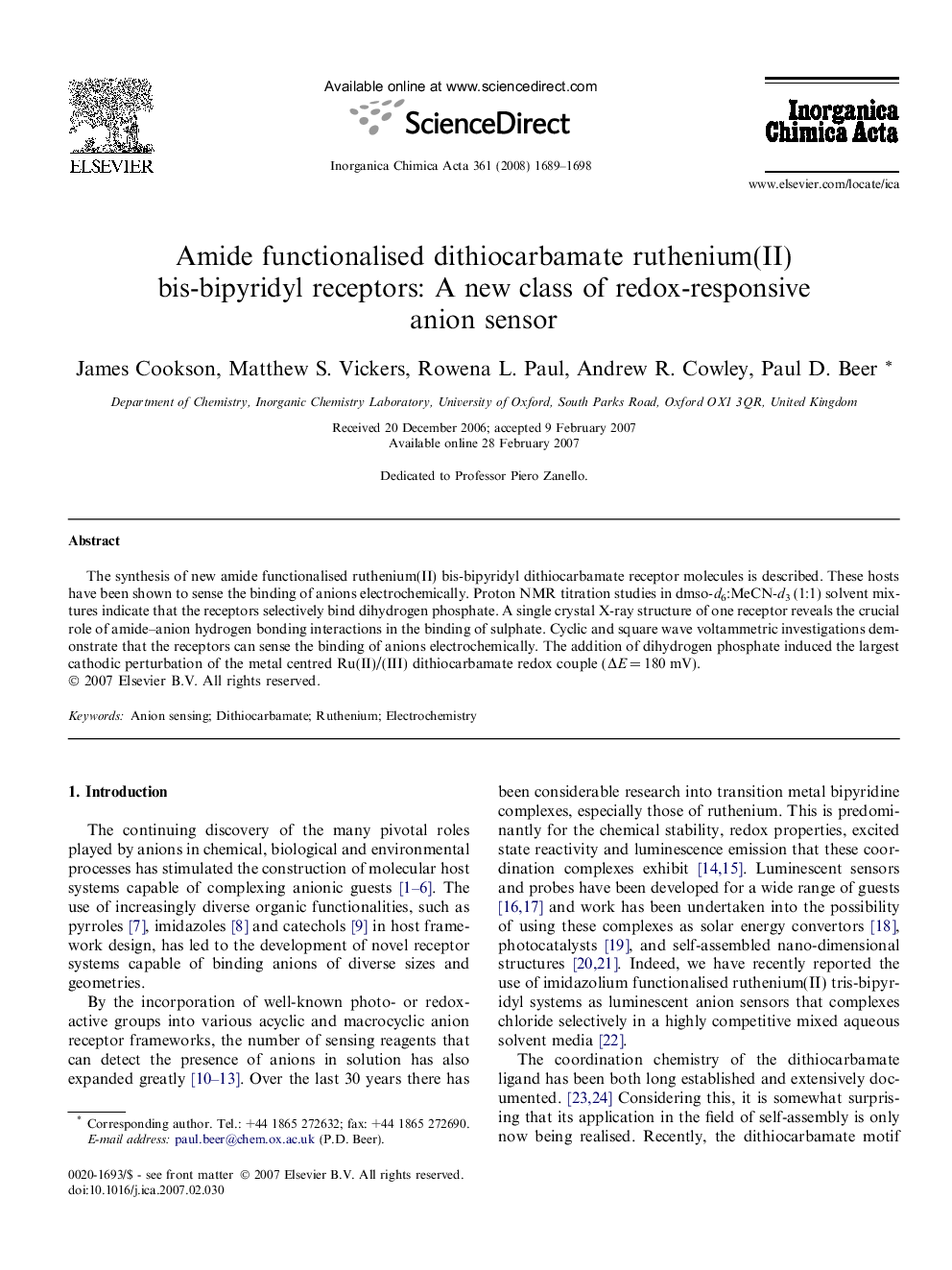| Article ID | Journal | Published Year | Pages | File Type |
|---|---|---|---|---|
| 1309154 | Inorganica Chimica Acta | 2008 | 10 Pages |
The synthesis of new amide functionalised ruthenium(II) bis-bipyridyl dithiocarbamate receptor molecules is described. These hosts have been shown to sense the binding of anions electrochemically. Proton NMR titration studies in dmso-d6:MeCN-d3 (1:1) solvent mixtures indicate that the receptors selectively bind dihydrogen phosphate. A single crystal X-ray structure of one receptor reveals the crucial role of amide–anion hydrogen bonding interactions in the binding of sulphate. Cyclic and square wave voltammetric investigations demonstrate that the receptors can sense the binding of anions electrochemically. The addition of dihydrogen phosphate induced the largest cathodic perturbation of the metal centred Ru(II)/(III) dithiocarbamate redox couple (ΔE = 180 mV).
Graphical abstractAmide functionalised dithiocarbamate ligands on coordination to the ruthenium(II) bis-bipyridyl motif afford a new class of redox-active anion receptor capable of sensing anions electrochemically in polar organic solvent media.Figure optionsDownload full-size imageDownload as PowerPoint slide
